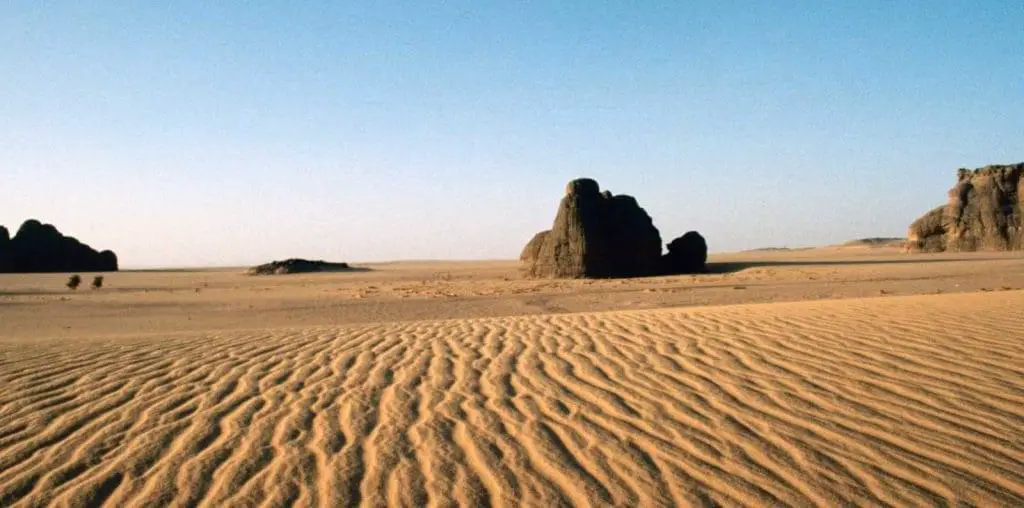
In Georg Koszulinski’s “Blood of the Beast,” the human cloning process takes a major nosedive as the first string of clones suddenly turn into bloodthirsty maniacs. But make no mistake; this isn’t your average flesh munching zombie movie. Koszulinski presents us a look at a very possible dark future, while turning conventional narration on its head. “Blood of the Beast” is definitely one of the most unique horror indies out there.
What was the inspiration behind Blood of the Beast?
In terms of thematic content, my inspiration stems from my fascination with human behavior, specifically within the context of world history. I’m certainly examining the past and making inferences about the future. I suppose my observation of 20th century history plays a more explicit role in my work, but my real interest lies in the relationship between our radical technological developments over the last century and our otherwise static mental and moral advancements.
As for inspiration from other writers and filmmakers, the list is long. The original “Blood of the Beast,” should be noted first. Produced shortly after the 2nd World War, the film uses footage taken from the slaughterhouses of France and uses it to draw parallels with the horrors of the concentration camps that were just then beginning to surface. Resnais’ “Night and Fog” and “Hiroshima Mon Amour” are also heavy influences, the latter of which I use actual clips from. Craig Baldwin’s “Tribulation 99” has been very influential and the horror films of the silent era are also borrowed from, most notably F.W. Murnau’s “Nosferatu.” There’s also a bit of a “Texas Chainsaw” aesthetic throughout the film, and of course the cattle create another filmic parallel. I can’t ignore “Night of the Living Dead” either, but I’d prefer to quote Richard Matheson’s novel, I am Legend, which inspired Romero as well. As for other literary works, George Orwell’s 1984 and Aldous Huxley’s Brave New World are paramount. It seems they’re fiction has become our reality and at this point in history I’m just adding the eulogy.
How did you fund the making of the film?
Well, the whole picture cost about $1500.00 to make, so Brian White (the associate producer) and I were able to fund it ourselves mainly via credit cards and Brian’s job. Of course, no one got paid; everyone did it because they believed in the work or trusted what I was doing. Most of the money went to feeding actors, digital tapes, 16mm film stock and the raw materials needed to reassemble the bone structure of a bovine. I didn’t want to use any outside money because I had something to prove: that creativity and ambition can prevail over a budget! As for the “funding” of equipment and props, all I can say is it’s guerilla filmmaking baby (and save your receipts)!
What were some of the biggest problems in getting “Blood of the Beast” produced?
I could write a novella on this one. Acquiring the video equipment was a daily challenge and one that threatened halting the production altogether. Convincing extras to shave their heads was a horror story all its own and getting them to show up was equally as nightmarish. There was always the problem of the sun setting before we were done shooting the daylight scenes we needed, which always forced me to become more aggressive with the cast and crew, thus exacerbating the imminent threat that at any given moment one of the principal actors would quit. To their immense credit, they endured below-freezing temperatures, grueling hours in the middle of nowhere and my sometimes-abusive behavior. There were also problems of getting people to sign on before production began. The main reason I play the male lead is because no one else I was interested in playing the part would fully commit to it. It was also one less person to worry about quitting.
Has it been easy getting your film screened?
Because I’ve only sent it to festivals and organizations that have either screened my work in the past or who purport to screen underground, unconventional cinema, it has been fairly easy getting the work screened. I don’t waste my time and money sending it to festivals looking for more mainstream, conventional approaches to cinema, so I eliminate many rejection letters that way.
Any future projects?
Oh yes. As far as I’m concerned, I’m just beginning to find my way in the film and video mediums. I’m looking to violate narrative conventions even further as well as explore live performance via 16mm moving picture and 35mm slide projection alongside live musical accompaniment – where the musicians are directed like actors and bring to life the narrative as it unfolds. I’m currently devoting a lot of time to establishing my underground distribution company, Substream Films. I travel to festivals and microcinemas with my work and, along the way, distribute film and music to independent video stores and record shops. The support I’ve received from various cities has been overwhelming. Any artist out there in need of assistance distributing their work should contact me at info@substreamfilms.com. I’m also working on a super 8 film documenting the landscape and architecture of the American South.
